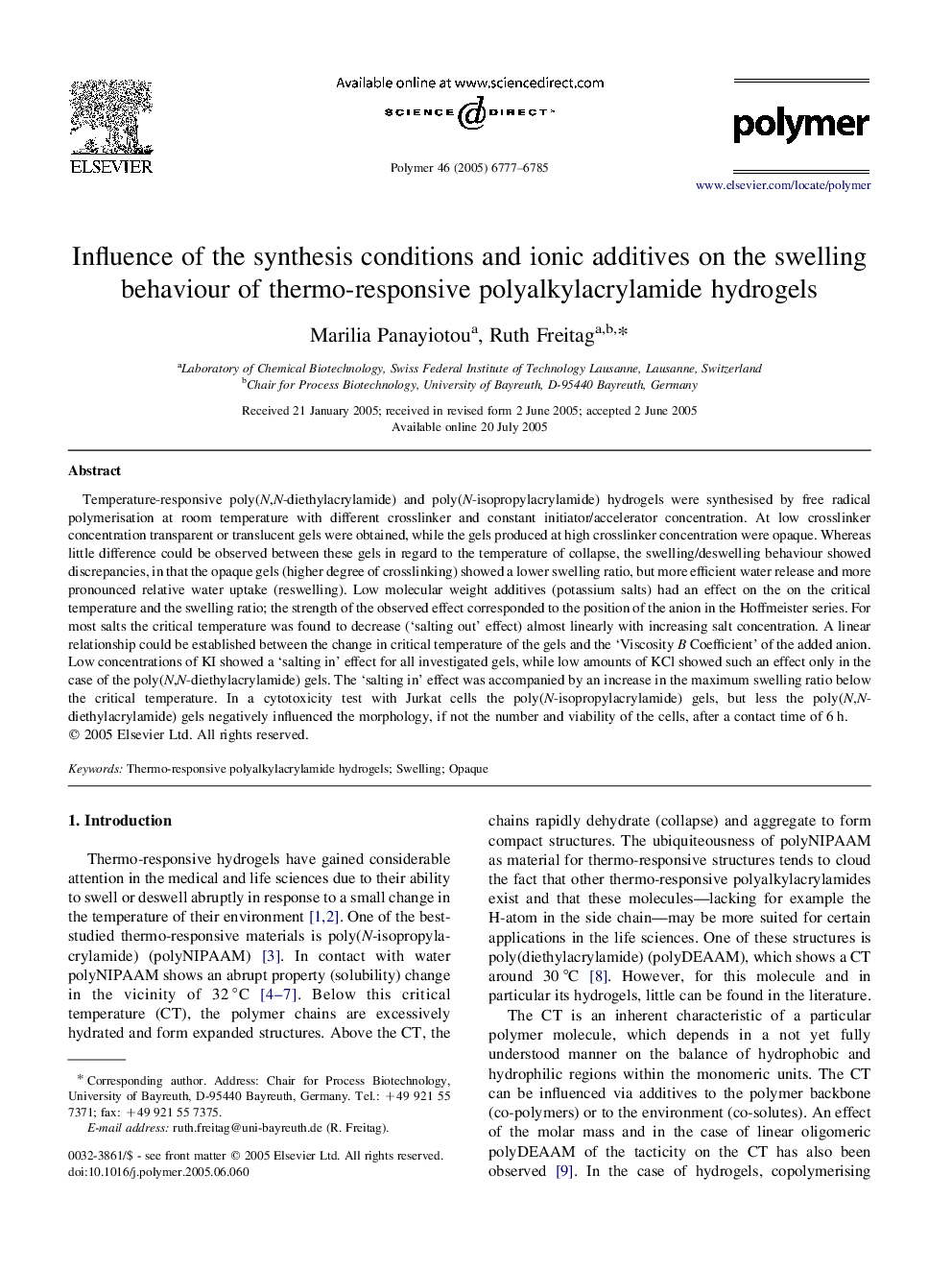| Article ID | Journal | Published Year | Pages | File Type |
|---|---|---|---|---|
| 5191173 | Polymer | 2005 | 9 Pages |
Abstract
Temperature-responsive poly(N,N-diethylacrylamide) and poly(N-isopropylacrylamide) hydrogels were synthesised by free radical polymerisation at room temperature with different crosslinker and constant initiator/accelerator concentration. At low crosslinker concentration transparent or translucent gels were obtained, while the gels produced at high crosslinker concentration were opaque. Whereas little difference could be observed between these gels in regard to the temperature of collapse, the swelling/deswelling behaviour showed discrepancies, in that the opaque gels (higher degree of crosslinking) showed a lower swelling ratio, but more efficient water release and more pronounced relative water uptake (reswelling). Low molecular weight additives (potassium salts) had an effect on the on the critical temperature and the swelling ratio; the strength of the observed effect corresponded to the position of the anion in the Hoffmeister series. For most salts the critical temperature was found to decrease ('salting out' effect) almost linearly with increasing salt concentration. A linear relationship could be established between the change in critical temperature of the gels and the 'Viscosity B Coefficient' of the added anion. Low concentrations of KI showed a 'salting in' effect for all investigated gels, while low amounts of KCl showed such an effect only in the case of the poly(N,N-diethylacrylamide) gels. The 'salting in' effect was accompanied by an increase in the maximum swelling ratio below the critical temperature. In a cytotoxicity test with Jurkat cells the poly(N-isopropylacrylamide) gels, but less the poly(N,N-diethylacrylamide) gels negatively influenced the morphology, if not the number and viability of the cells, after a contact time of 6Â h.
Related Topics
Physical Sciences and Engineering
Chemistry
Organic Chemistry
Authors
Marilia Panayiotou, Ruth Freitag,
